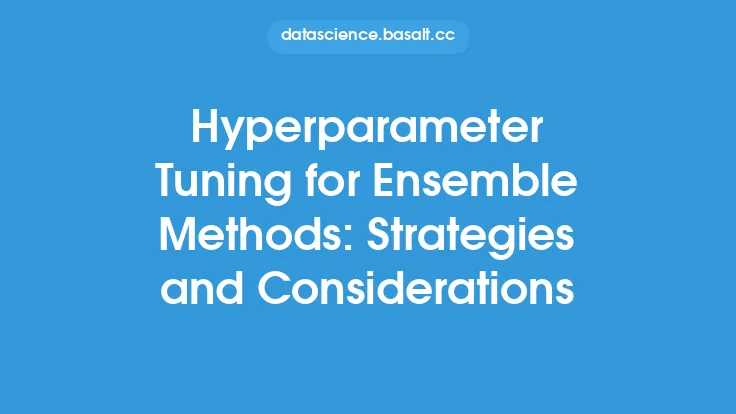Hyperparameter tuning is a crucial step in the machine learning pipeline, as it allows practitioners to optimize the performance of their models. Two popular methods for hyperparameter tuning are grid search and random search. While both methods can be effective, they have different strengths and weaknesses, and the choice of which one to use depends on the specific problem and dataset.
Introduction to Grid Search
Grid search is a hyperparameter tuning method that involves exhaustively searching through a predefined set of hyperparameters. This method is simple to implement and provides a comprehensive understanding of how different hyperparameters affect the model's performance. In grid search, a range of values is defined for each hyperparameter, and the model is trained and evaluated on all possible combinations of these values. The combination that results in the best performance is then selected as the optimal set of hyperparameters.
Introduction to Random Search
Random search, on the other hand, is a hyperparameter tuning method that involves randomly sampling the hyperparameter space. This method is often more efficient than grid search, as it does not require evaluating all possible combinations of hyperparameters. Instead, random search uses a random sampling strategy to select a subset of hyperparameters to evaluate. The model is then trained and evaluated on these randomly selected hyperparameters, and the best-performing combination is selected as the optimal set of hyperparameters.
Comparison of Grid Search and Random Search
Both grid search and random search have their strengths and weaknesses. Grid search provides a comprehensive understanding of the hyperparameter space, but it can be computationally expensive and may not be feasible for large datasets or complex models. Random search, on the other hand, is often more efficient than grid search, but it may not provide a comprehensive understanding of the hyperparameter space. Additionally, random search may not always find the optimal set of hyperparameters, as it relies on random sampling.
Choosing Between Grid Search and Random Search
The choice between grid search and random search depends on the specific problem and dataset. If the dataset is small and the model is simple, grid search may be a good choice. However, if the dataset is large or the model is complex, random search may be a better option. Additionally, if computational resources are limited, random search may be a more feasible option. It's also worth noting that random search can be used as a preliminary step to identify the most important hyperparameters, and then grid search can be used to fine-tune these hyperparameters.
Hyperparameter Tuning Strategies
In addition to choosing between grid search and random search, there are several other hyperparameter tuning strategies that can be used. These include Bayesian optimization, gradient-based optimization, and evolutionary algorithms. Bayesian optimization uses a probabilistic approach to search the hyperparameter space, while gradient-based optimization uses the gradient of the objective function to search the hyperparameter space. Evolutionary algorithms use a population-based approach to search the hyperparameter space.
Implementing Grid Search and Random Search
Grid search and random search can be implemented using a variety of machine learning libraries and frameworks, including scikit-learn, TensorFlow, and PyTorch. These libraries provide built-in functions for grid search and random search, making it easy to implement these methods. Additionally, there are several other libraries and frameworks available that provide more advanced hyperparameter tuning capabilities, such as Hyperopt and Optuna.
Best Practices for Hyperparameter Tuning
Regardless of which hyperparameter tuning method is used, there are several best practices that should be followed. These include using a validation set to evaluate the model's performance, using a suitable metric to evaluate the model's performance, and avoiding overfitting by using regularization techniques. Additionally, it's often a good idea to use a random search as a preliminary step to identify the most important hyperparameters, and then use a grid search to fine-tune these hyperparameters.
Common Pitfalls in Hyperparameter Tuning
There are several common pitfalls that can occur when performing hyperparameter tuning. These include overfitting, underfitting, and using an inappropriate metric to evaluate the model's performance. Overfitting occurs when the model is too complex and fits the training data too closely, while underfitting occurs when the model is too simple and does not capture the underlying patterns in the data. Using an inappropriate metric to evaluate the model's performance can also lead to suboptimal results.
Conclusion
In conclusion, grid search and random search are two popular methods for hyperparameter tuning, each with their strengths and weaknesses. The choice between these methods depends on the specific problem and dataset, as well as the computational resources available. By understanding the advantages and disadvantages of each method, practitioners can make informed decisions about which method to use and how to implement it. Additionally, by following best practices and avoiding common pitfalls, practitioners can ensure that their hyperparameter tuning efforts are effective and efficient.





